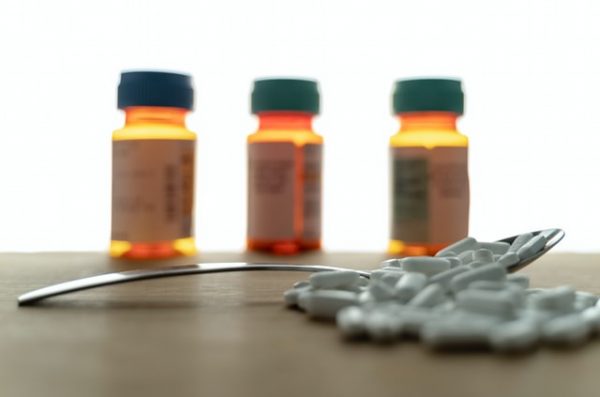
The Substances and Supplements To Avoid As An Athlete
As an athlete, the list of prohibited substances is long, and some do not have the proper knowledge about all the substances. The World Anti-Doping Agency is responsible for providing the list of substances and methods banned in sport and updating it at least once a year. The list takes effect each year on January 1st.
This article aims to impart knowledge on the classifications and specifics of the banned substances for athletes without necessarily generalizing all sports activities.
The agency subdivides the list into substances and methods that are;
- Banned at all times; these include hormones, anabolics, masking agents, EPO, and diuretics. However, this does not limit the list to these substances.
- Banned only in-competition, they include substances such as stimulants, narcotics, and glucocorticosteroids and methods such as blood transfusion or manipulation, among others.
Not all substances and methods are named on the banned list. However, a substance or method can be prohibited if not approved for human use by any governmental health regulatory authority. It can also be prohibited if it contains a chemical structure and biological effects similar to banned substances.
The criteria for adding substances to the prohibited list is determined by whether;
- It has the potential to enhance sport performance
- It represents a potential health risk to the athlete
- It violates the spirit of the sport
As an athlete, you must ensure every supplement you wish to consume is adequately tested for any of the banned substances before you start using.
Classification and Categorization of Banned Substances
Prohibited substances are grouped into various classifications within the banned list, these include;
1. S0: Non-approved Substances(At All times)
In 2021, this entails any pharmacological substance not addressed by the sections below but has not been approved for human use by any governmental health regulatory authority. These include developmental and discontinued drugs.
2. S1: Anabolic Agents
These include all anabolic androgenic steroids(AAS) and all other anabolic agents. For example, clenbuterol, selective androgen receptor modulators, enobosarm, tibolone, zeranol, and zilpaterol.
3. S2: Peptide Hormones, Mimetics, Growth Factors
These include all Erythropoietins and agents affecting erythropoiesis, all peptide hormones, growth hormone-releasing factors, growth factors, and growth factor modulators.
4. S3: Beta-2 Agonists
It includes all selective and non-selective beta-2 agonists, with exceptions on a prescribed maximum dosage of inhaled salbutamol, inhaled formoterol, inhaled salmeterol, and inhaled vilanterol.
5. S4: Hormone and Metabolic Modulators
Inclusive of aromatase inhibitors, anti-estrogenic substances, agents preventing activin receptor IIB activation, and metabolic modulators.
6. S5: Diuretics and Masking Agents
7. S6: Stimulants(In-competition Only)
All stimulants are banned in-competition. These include all optical isomers, non-specified stimulants such as cocaine, specified stimulants, and other substances with a similar chemical structure or biological effects to these stimulants.
8. S7: Narcotics(in-competition Only)
9. S8: Cannabinoids(In-competition Only)
Whether natural or synthetic, all cannabinoids are prohibited in-competition. These include cannabis and cannabis products, natural and synthetic THCs, and synthetic cannabinoids that mimic the effects of THC. The only exception in this category is cannabidiol.
10. S9: Glucocorticoids(In-competition Only)
All glucocorticoids administered orally, intravenous, intramuscular, or rectally are prohibited during competitions. Some of these include; beclometasone, dexamethasone, mometasone, betamethasone, flucortolone, prednisolone, budesonide, flunisolide, among others.
11. M1: Blood and Blood Component Manipulation
This prohibits;
- the administration or reintroduction of any quantity of blood or red blood cell products
- Artificial enhancements to the uptake, transport, or delivery of oxygen
- All forms of intravascular manipulation of blood or blood components
12. M2: Chemical and Physical Manipulation
You should not tamper with the integrity of collected samples or infuse/inject more than 100mL per 12 hour period with exceptions to hospital treatments, any surgical procedures/clinical diagnostic investigations.
13. Beta-Blockers
These are prohibited both in-competition and out-of-competition for specific sports. For in-competition, the sports include; Skiing/Snowboarding, automobile, billiards, underwater sports, darts, and golf. They are banned out-of-competition for competitors in archery and shooting sports.
14. M3: Gene Doping
Use of nucleic acids or nucleic acid analogues and the use of genetically modified cells is prohibited.
What Else Do You Need to Know?
Under the World Athletic Rules, the presence of a prohibited substance in an athlete’s sample or using banned substances and methods makes up a doping offense. You need to keep updated on the World Anti-Doping Agency’s prohibited substances and methods list to avoid failing the doping tests.
There have been allegations of intentional sabotage amongst athletes over the years, so it is essential to double-check what you are consuming beforehand. Ignorance towards these yearly provisions by the World Anti-Doping Agency(WADA) could also lead to falling victim to unintentional doping scandals.
Another mistake commonly made by athletes is intentional doping, assuming that they would not get tested. In some countries, out-of-sport testing is standard, and so you should learn from the mistakes made by athletes who were caught doping in the past. Stay clean all year round.
WADA keeps a biological passport of an athlete to spot the anomalies easily. A biological passport is the information about an athlete’s normal blood and urine chemistry, an implementation that has increased the number of athletes caught over the years.
Conclusion
WADA aims to keep sports fair and free of performance enhancement, and it would be sad if you become an example of their strong authority over the matter. Before you package supplements, you need to do two things;
- Buy some proper packaging; one such high-quality packaging product is the retort pouch from china, which is recyclable and offers airtight sealing, keeping your supplements as good as new.
- Ensure these supplements do not contain any prohibited substances. Avoid intentional doping and be on the lookout for sabotage in your sport.
All the best.
Image Credit: Photo by Michael Longmire on Unsplash
Author: HealthyLife | Posted on: March 26, 2021
« 10 fitness resolutions that will help improve your health How to Maintain a Healthy Mind and Body »






















Write a comment